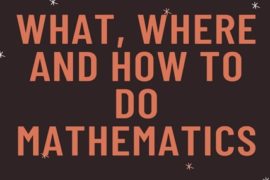Not all of us are parents or teachers, but I’ve long asserted that education is a “public good,” something that each and every one of us should be very, very concerned with. When kids don’t graduate or graduate with poor critical thinking skills, a lack of curiosity of the world around them or a dearth of basic math, reading and writing abilities, everyone suffers. And in a world where STEM-based employers are recruiting and paying more, we owe it to the next generation to do better.
(This is not to say that our educational system doesn’t have some absolutely enormous issues in other areas. Perhaps the biggest problems our schools face are not academic at all. I believe that if our country took a good, hard look at poverty, violence and teacher care, we’d make huge strides in the right direction. But this post is about academics.)
Enter the Common Core Standards. For decades, each state has developed and cultivated its own standards – or objectives required by each basic course, from history to language arts to biology. But over the last 20 years, a movement has grown to standardize these objectives across the country. With this umbrella of standards, what little Johnny is learning in Arkansas will be similar to what little Patrice is learning in Maine.
Right now, the Common Core Standards only cover English (language arts) and math. They’ve been adopted by 45 states. (Alaska, Nebraska, Texas and Virginia haven’t adopted them at all, and Minnesota adopted only the English language arts standards.) Standards for other subjects are in the works, including science and social studies.
For the last six months, I’ve been writing and editing curricula designed to meet the Common Core Standards for mathematics. I’ve gotten a pretty good feel for what they are, and I have to say that I like them for the most part. Here are some general thoughts I have:
Students will learn certain concepts earlier. I haven’t spent much time with the elementary level standards, but at least in middle and high school, various mathematical topics will be introduced earlier in the standards. For example, exponential functions (an equation with x as an exponent, like with exponential decay or compound interest) is covered in Algebra I, rather than Algebra II.
The result is two-fold. As the standards are rolled out, some students will be left behind. In other words, kids who started school without Common Core may have a hard time catching up or bridging the gap. Second, students will have the opportunity to learn more mathematics throughout their high school career. The idea is to better prepare them for STEM in college and careers.
The emphasis is on critical thinking. This part, I love, love, love. For example: geometry proofs are back! And rather than compartmentalizing the various branches of mathematics, students will make connections between them. I just wrote a lesson that looks at how the graphs, equations and tables for various functions – linear, quadratic and exponential – are alike and dissimilar. Previously, students may never have seen these functions together in the same unit, much less the same lesson.
This means that assessments will change. Students will be asked to explain their answers or verbalize the concepts. Expect to see much more writing and discussion in math class.
Applications, applications applications. Math is no longer done for math’s sake. And this couldn’t be better news. As I’ve said here many times before, math is pointless until it’s applied. Students should get this first-hand with Common Core, which outlines very specific applications for various concepts.
The idea here is to demonstrate that the math they’re learning is useful. The result? Hopefully more students will choose to enter STEM careers or major in these fields in college.
Students learn in different ways. Modeling plays a big role in the new standards, which means that students can approach the math in a variety of ways – from visualizing the concepts to using manipulatives like algebra tiles to working out equations in more traditional ways to graphing. This way, students can enter the material from a variety of different doors. And that can translate to greater success.
Sure, there is a lot to be concerned about (most especially the gap that we expect to see in student performance), but from my perspective the Common Core Math Standards are a step in the right direction. It’s important to know that these do not form a federal curriculum; the states are still responsible for choosing curricula that meet these standards, and education resource companies are scrambling to meet these meets. (That means I’m very, very busy these days!) It’s also important to know that chucking old ideas and implementing new ones puts a huge burden on already over-taxed schools and school systems. Finally, there is no doubt that this initiative was driven by the textbook companies, which means we’re still beholden to politics and capitalism.
But in looking at the standards alone, I think Common Core is excellent. If we can implement the standards well and keep them in place for a while, I think our kids will benefit.
What do you think of Common Core? Share your thoughts in the comment section.








Comments are closed.